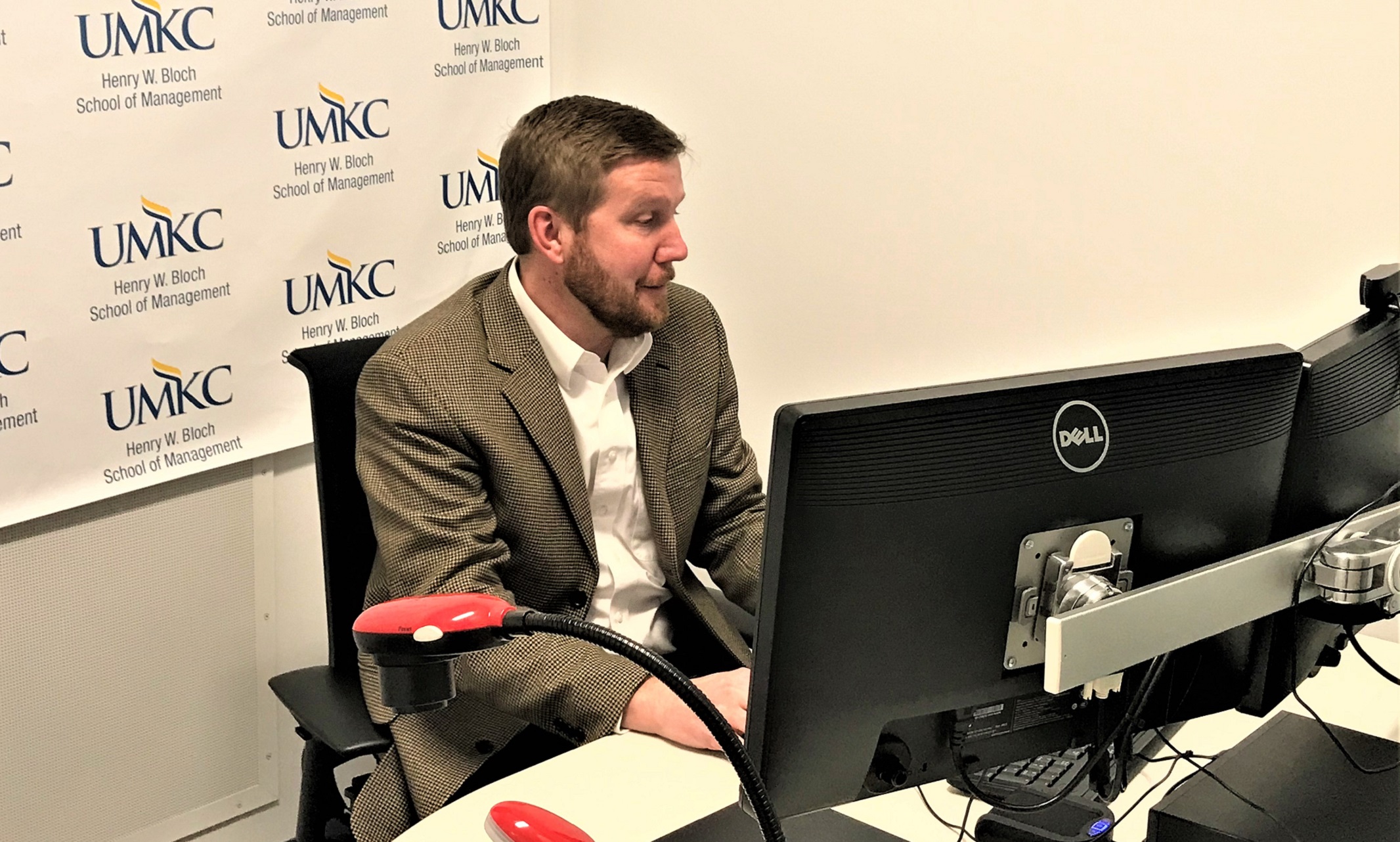University of Missouri-Kansas City students and faculty are wrapping up their first week of exclusively online classes due to the COVID-19 pandemic. We checked in with seasoned online instructor Leigh Salzsieder, chair of the department of accountancy and associate professor of accounting at the Henry W. Bloch School of Management, about making the move to online.
How long have you taught online courses? How has the technology improved since you began teaching online?
I have been teaching online since 2017 and have seen a couple of big improvements. First, the textbook publishers’ ability to run their digital content native in Canvas makes designing and delivering a course significantly easier. Another big improvement is the development of high-functioning apps for mobile use. Canvas and Zoom both do very well on a mobile device.
Did you have any concerns when you started teaching online?
My biggest concern moving from in-person to online teaching was that I would lose the ability to connect with my students. While things are different online, I can honestly say that in many ways it is more humanizing. For example, I have never met so many of my students’ children and pets. In an online synchronous environment where students are logging in from home, it is common for a toddler or pet to wander on screen. Those sorts of interactions allow for student-to-student and student-to-faculty interactions to have more personal meaning. It probably sounds silly, but it is really cool!
What did students think of the switch to online classes? Any surprising reactions?
Most of the students have really enjoyed the online synchronous delivery. The added flexibility has been the students’ favorite part. In previous classes, I have had students join class from all over the world, and even from airplanes (although the connection wasn’t great).
What are the benefits of online courses? Challenges?
The biggest benefit for students is flexibility. It also allows them to pause and replay course content that they’re struggling with and need to revisit. In addition, having a significant portion of the material online allows students to interact with it on their terms. I have had students tell me they listen to lectures while working out, while driving, etc. Online integrated content also allows students to get quality feedback on content at any time day or night. That’s not to say I’m answering questions at 2 a.m., but my online content is answering their questions with detailed feedback on practice sets.
There are challenges to moving online, particularly for faculty. The change from in-person to online instruction can be a little scary. There are also costs to learning and adopting new technology, training and course certification, learning and creating new ways of assessing student outcomes, etc. Managing students online is also different than managing students in-person. It takes some time to get used to using discussion boards and other tools that facilitate meaningful interaction both peer-to-peer and with the instructor.
"Most of the students have really enjoyed the online synchronous delivery. The added flexibility has been the students’ favorite part."
You're a member of eLearning Online Faculty Advisory Committee for UM System. What type of things do you work on for that group?
Our group is advisory to the eLearning Strategy and Implementation Oversight Committee which is the actual decision-making body for eLearning and includes provosts for the four system campuses and system-level representatives. Our group was created with the intention of providing a faculty voice directly to the Oversight Committee regarding the eLearning enterprise.
Any tips for students who are new to online learning? Professors?
I think my tip for students would be to establish a routine. Having content available 24-hours-a-day often leads to procrastination. When I ask successful students how they do it, having a routine is the most common response.
For professors, I would say try not to make your mind up about eLearning before you give it a chance. I’d also recommend that faculty utilize the resources available to them. We have faculty all over campus that are extremely effective online in areas you might not realize. For example, I serve on the eLearning Online Faculty Advisory Committee with Amanda Grimes from the School of Nursing and Health Studies and Kati Toivanen from Art and Art History, both of whom have excellent online courses.

